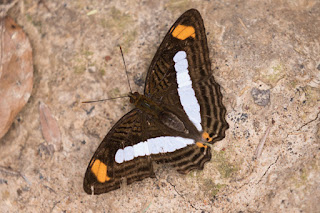Peter writes:
My recent visit to Peru came about as a result of an
invitation from PROMPERU, the country’s tourism authority, for Avian Adventures
to send a representative on a short familiarisation trip. The object was for me to gain some further
experience of Peru with particular reference to the birdwatching but also the
accommodation, transport, guiding and infrastructure relevant to us offering a
tour there.
I was part of a group of eight (three of us from the UK, two
each from Italy and the USA and one from Canada) and we were accompanied
throughout by at least four local Peruvians.
Without exception, they were a great bunch and a pleasure to travel
with.
Apart from hotels in Lima at the start and end of the trip,
accommodation was in hotels and lodges operated by Inkaterra, a company at the
forefront of ecotourism and sustainable development in Peru. More than 800 bird species and 100 mammal
species have been recorded in the grounds and surroundings of Inkaterra’s seven
properties and we got to stay at four of them.
After a night in Lima on arrival we were back at the airport
next morning for a flight to Puerto Maldonado, known as ‘the gateway to the
southern Amazon jungle’. When we arrived
there just after midday the temperature was a steamy 32ºC.
From the airport it was just a short way to the Rio Madre de
Dios, a river that flows into neighbouring Bolivia and is part of the
vast Amazon River watershed.
Here we boarded a boat that took us to the Inkaterra Guides Field
Station. Birds seen from the boat included
many Plumbeous Kites, Cocoi Heron, Wood Stork, Snowy Egret, Pied Lapwing, Black Skimmer, Red-throated
Caracara and four species of vultures – a very satisfactory start. In the afternoon we were birding in nearby
forest as we walked to a canopy tower and a slightly scary walkway between the
trees, 100 feet above the forest floor.
Amongst the birds seen were Russet-backed Oropendola, Buff-throated
Woodcreeper, Black-fronted Nunbird, Curl-crested Aracari and several tanager
species; mammals included a Night Monkey and a Mouse Opossum.
On the Rio Madre de Dios
Snowy Egret
Wood Stork
Inkaterra Guides Field Station
Mouse Opossum
Next day we took to the river again but only after dragging
ourselves away from the amazing number and variety of birds seen around the
lodge. We were at the edge of the
Tambapota National Reserve, a vast area of Amazonian rainforest with tanagers,
motmots, barbets, parrots, macaws and parakeets, woodcreepers, flycatchers and
lots more, all vying for attention and often presenting an identification
challenge – in other words great birding!
The boat took us downstream to an oxbow lake, Lago Valencia. Again it was birds all the way with Amazon
Kingfisher, Grey-lined Hawk, Black Caracara, Jabiru, Collared Plovers, Hoatzins
and a Ladder-tailed Nightjar among the many highlights. We walked a forest trail and got up close to
enormous Brazil nut trees. As well as
birds there were butterflies to enjoy (and identify later!) and an occasional
lizard or monkey.
Grey-lined Hawk
Ladder-tailed Nightjar
Glittering Sapphire
Iphiclus Sister
Giant Ameiva
Blue Morpho
Black Caracara
The following day saw us board the boat again and head off along
the river. However, we didn’t go very
far before taking off on foot along a muddy trail that led us to another oxbow lake,
Lago Sandoval. The walk produced
Collared Trogon, Plumbeous Antbird, Plain-winged Antwren, Dull-capped Attila
and much more. At the lake we climbed
aboard two smaller boats and went looking for Giant Otters. Around the edge of the lake were Hoatzins,
Rufescent Tiger-Herons, Limpkins, Grey-necked Wood-Rail, Striated Herons,
Anhingas, Neotropic Cormorants and Sunbitterns.
Long-nosed Bats were found roosting on a tree trunk. There was a thunderstorm while we were out on
the lake and when we returned to the muddy trail it was even muddier!
The trail to Lago Sandoval
Giant River Otter
Birding on Lago Sandoval
Limpkin
Anhinga
Long-nosed Bats
Hoatzin
Grey-necked Wood-Rail
After two nights at the Field Station, we now went to spend
a night at the Inkaterra Hacienda Concepción.
We arrived late afternoon when the light was starting to fade but still
managed to find a few birds around the grounds as well as Bolivian Squirrel
Monkeys and a Brown Agouti. There was
much better birding during the pre-breakfast session the next morning, starting
at 5.00 a.m. Species seen included
Yellow-tufted & Red-stained Woodpeckers, White-throated Jacamars,
White-browed & Chestnut-tailed Antbirds, Amazonian Motmot, Great Antshrike
and Speckled Chachalaca but none of these gained our attention more than a
Rainbow Boa, a strikingly-patterned snake that allowed close approach and, in
fact, might easily have been stepped on.



























1 comment:
Gosh, there is quite a list to keep me busy looking up on this Blog. Will set a rainy afternoon aside for this. Thanks very much for such a detailed article. Looking forward the sequel.
Post a Comment